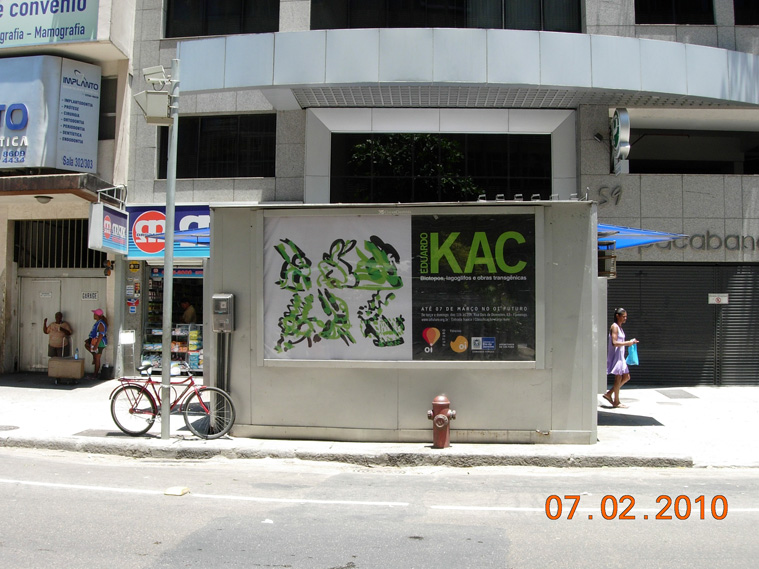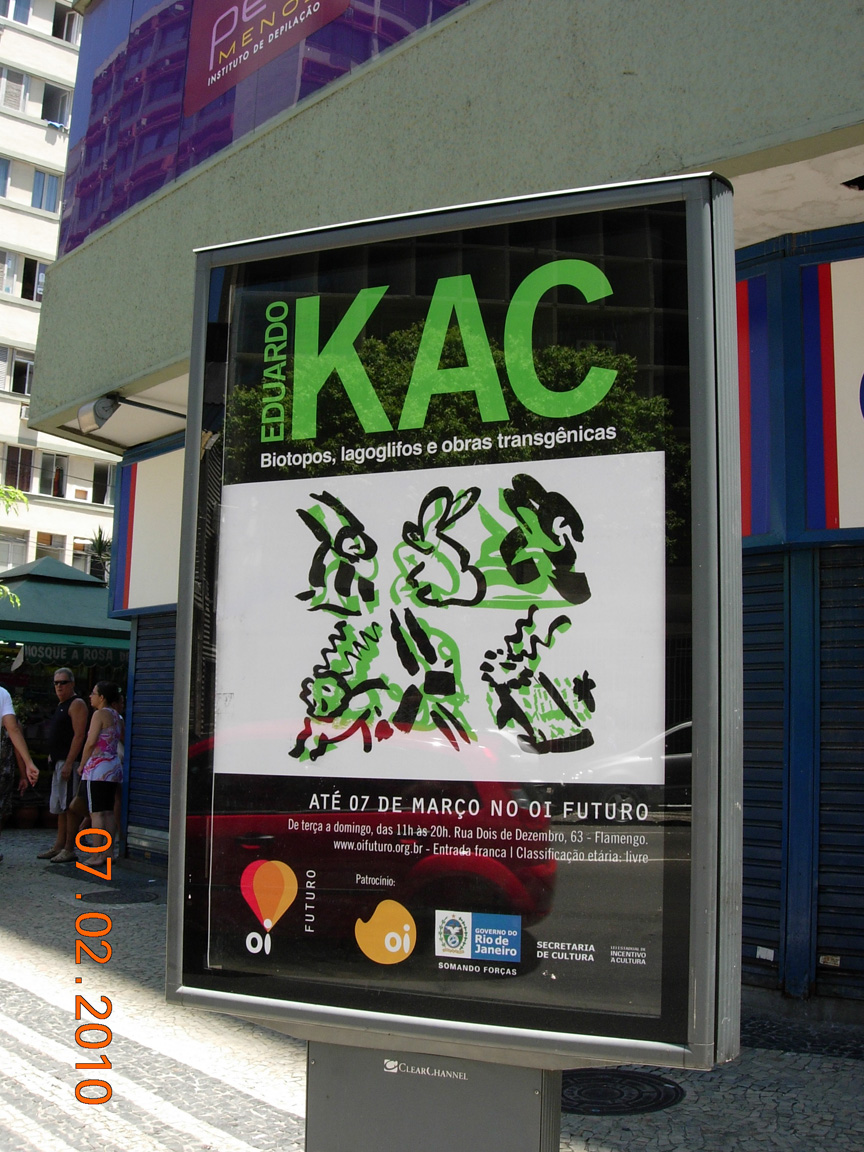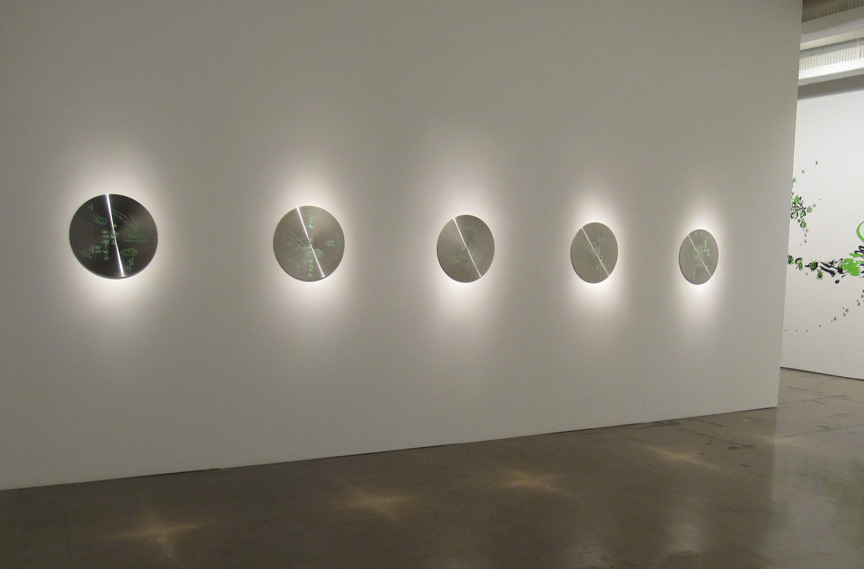
Oi Futuro, Rio de Janeiro, Brazil (January 25th to March 30th, 2010)
The Lagoglyphs are a series of artworks in different media in which Eduardo Kac creates a visual language and form of writing that he describes as "rabbitographic". The series references Kac's project GFP Bunny (2000)—also known as Alba, the green bunny—a genetically modified rabbit that glows fluorescent green under certain light conditions. The Lagoglyphs are pictograms, visual symbols composed of two units (one green, one black) that each evoke Alba through infinite variations.

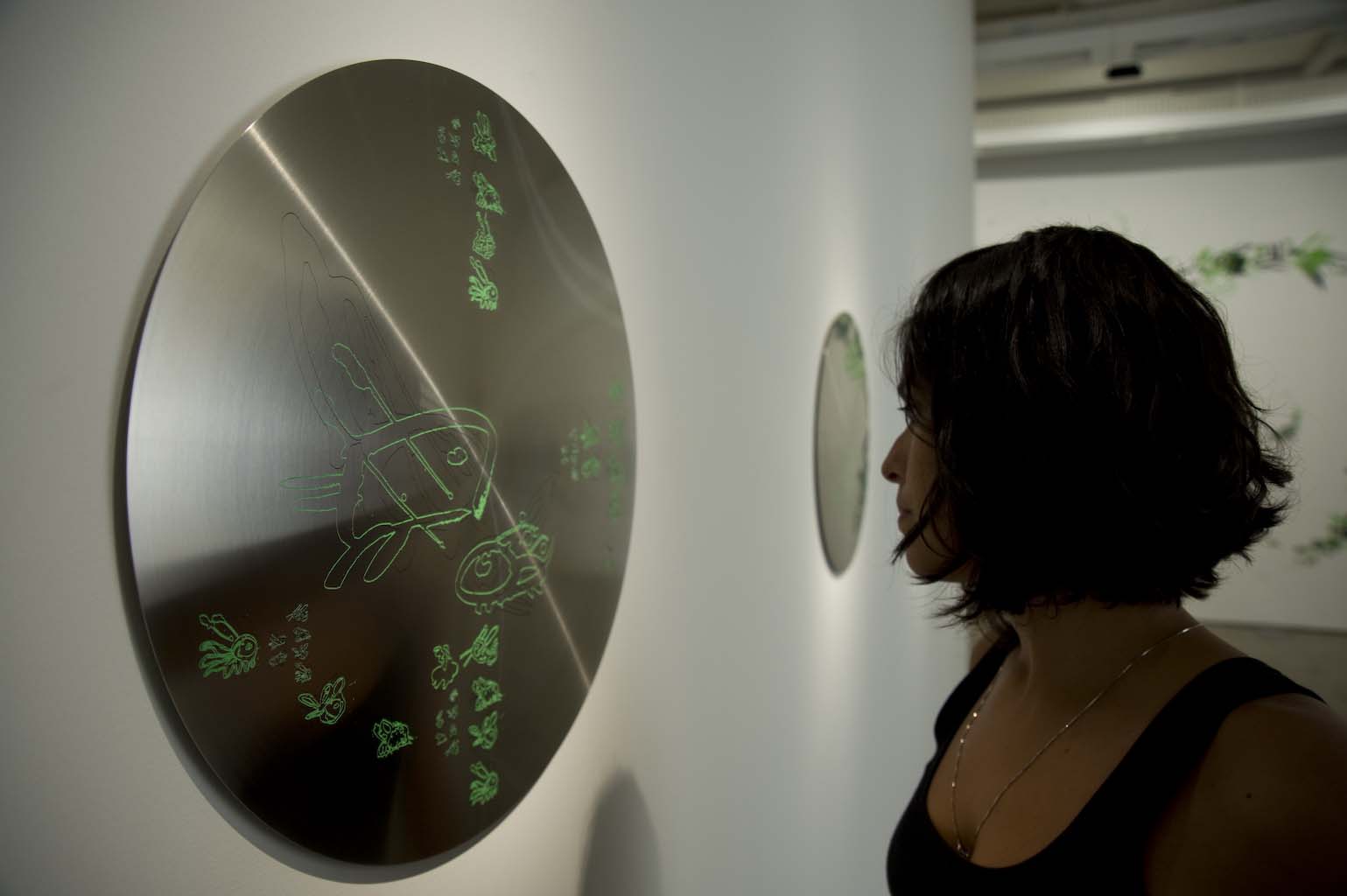

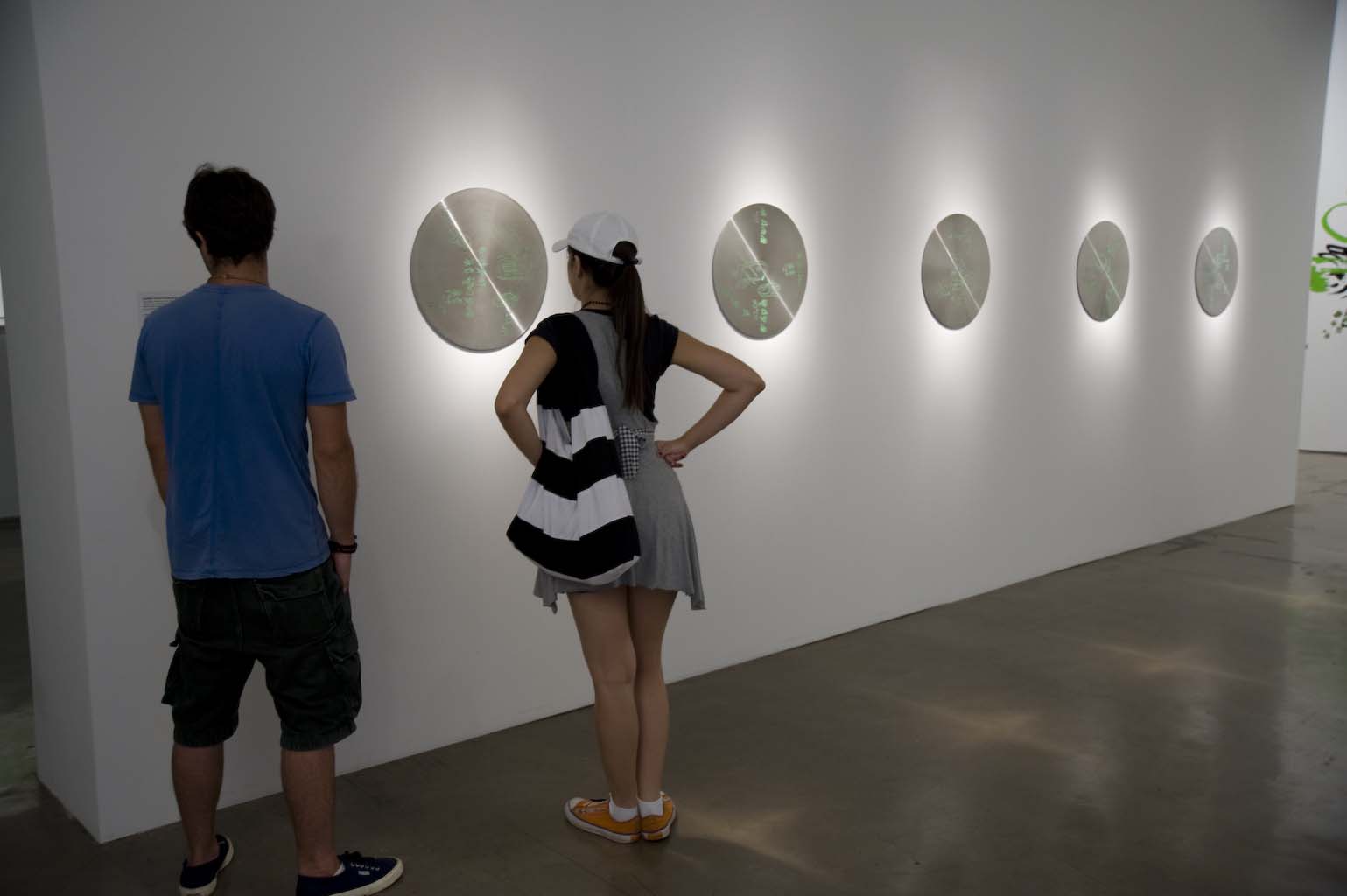
Eduardo Kac, Lagoglyphs : The Lepus Constellation Suite (2009)
5 engraved and painted steel discs (20 inches diameter each) with lagoglyphic interstellar messages transmitted to the Lepus Constellation on March 13, 2009 from Cape Canaveral, Florida.
Lagoglyphs : The Lepus Constellation Suite (2009) explores the notion that certain life forms, such as a green rabbit, are "alien" to us. The project literally communicates a sign system to the "alien" other. The lagoglyphic "message" inscribed on each disk has been transmitted to the Lepus Constellation (the Gamma Leporis starbelow Orion) from Cape Canaveral, Florida, on March 13, 2009 via satellite broadcasting equipment and a parabolic dish antenna. Kac quite literally connects sign systems across the universe: the lagoglyphic rabbit meets the lepus (Latin for hare) constellation. The constellation is 29 light years away from Earth, which means that Kac's messages would arrive in the year 2038.
Disc #1 is in the collection of Alfredo Herzog da Silva, São Paulo.
Disc #5 is in the collection of Virgile Novarina, Paris.

Eduardo Kac, Lagoglyphs : Wildfire, 2010, site-specific plotted vinyl without fixed scale, 12.4 ft x 30.8 ft. (3,80 m x 9,40m).
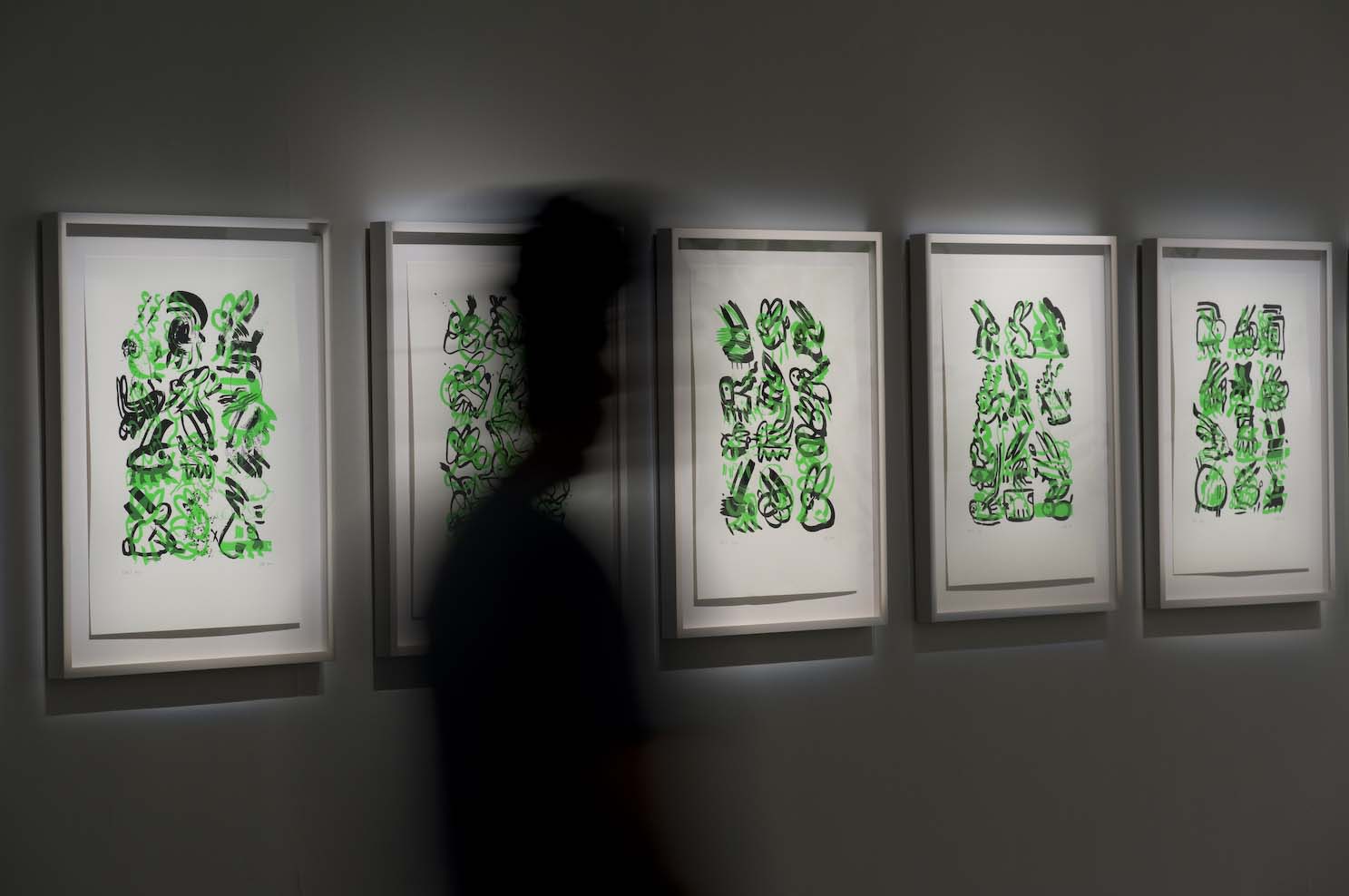
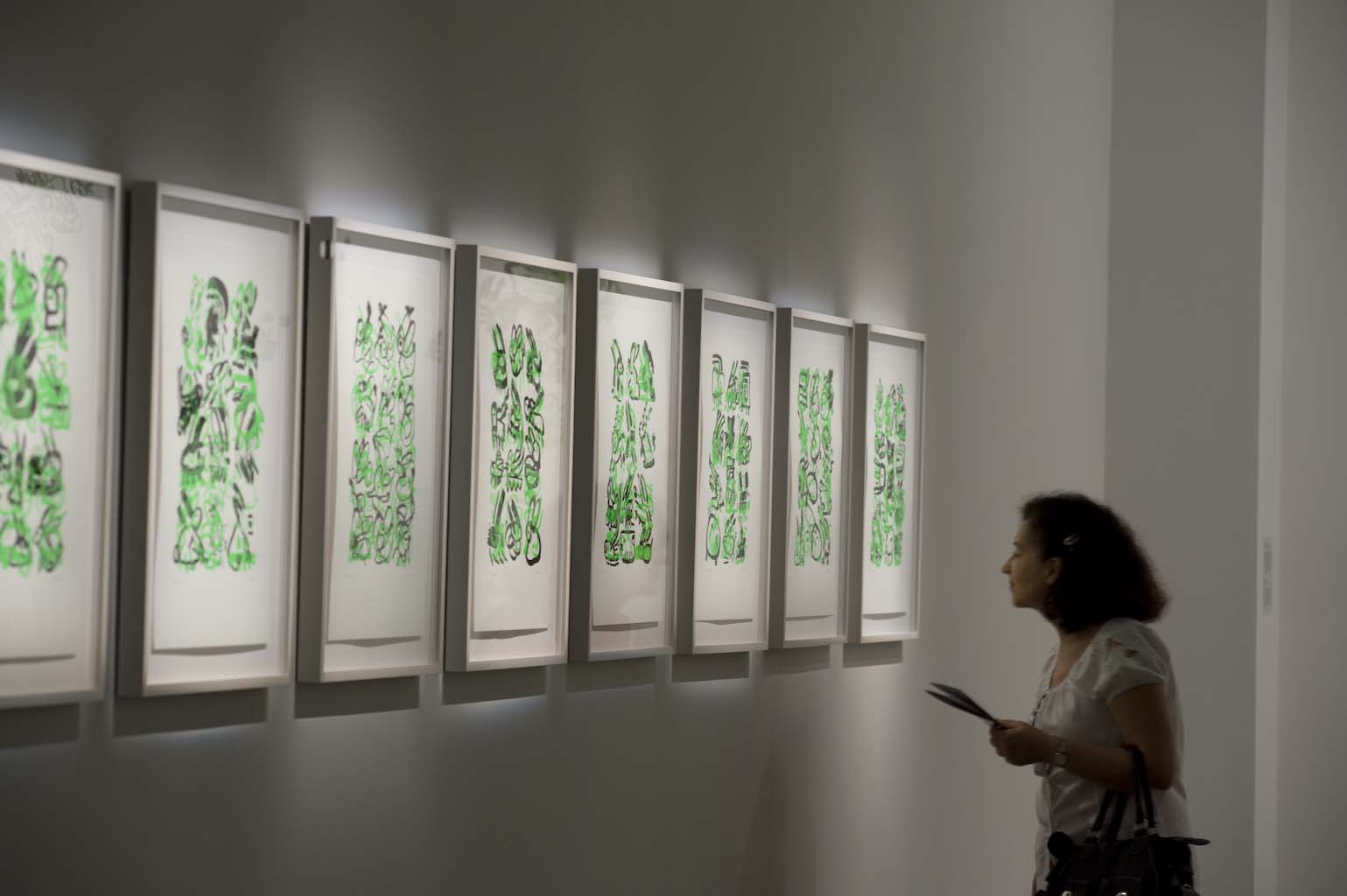
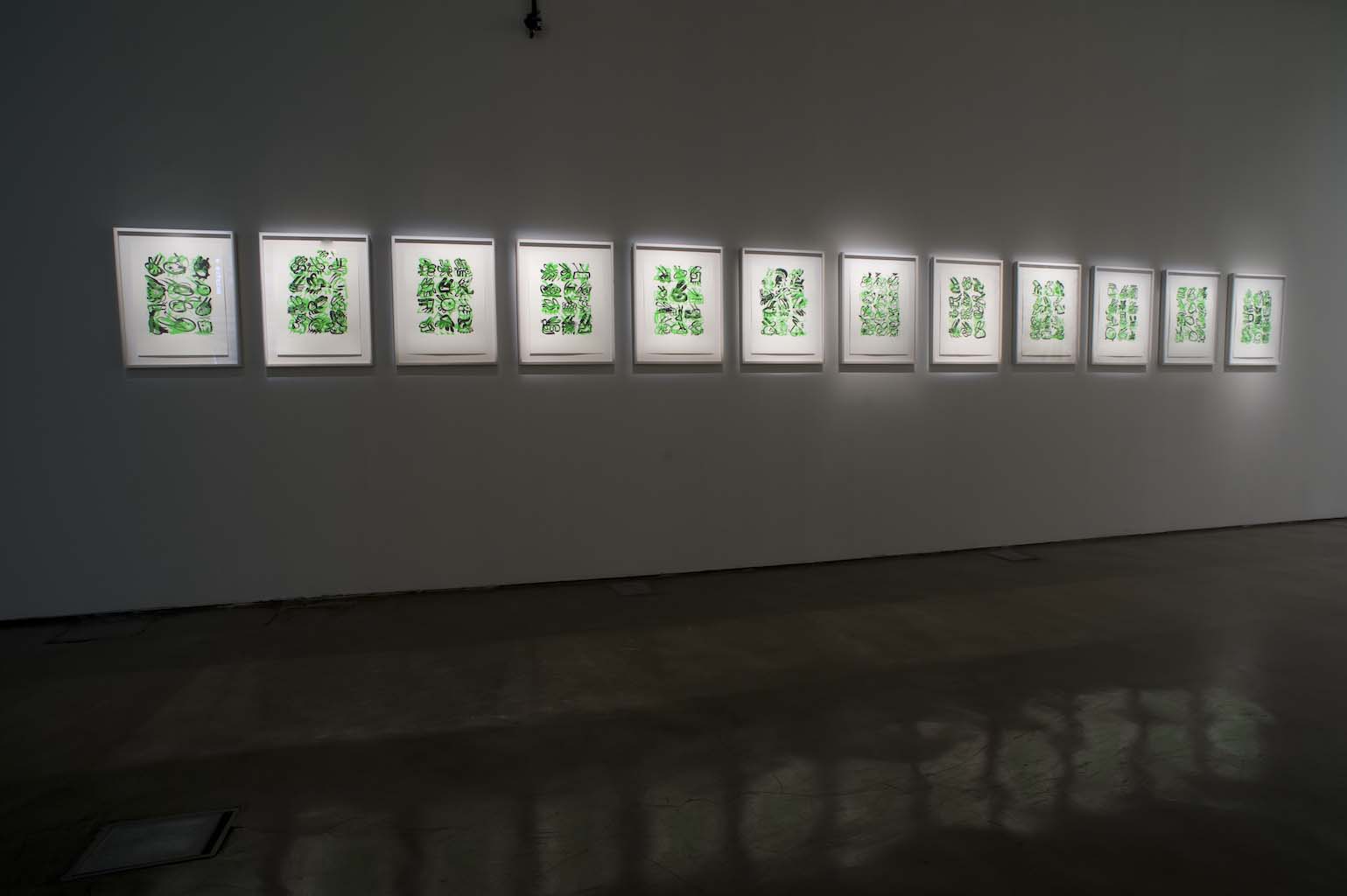
Eduardo Kac, Lagoglyphs : The Bunny Variations (2007)
12 silkscreen prints, 15.7 x 21.2 inches each.
Edition of 50.
The silkscreens highlight calligraphic aspects of the lagoglyphs in sequential variations. The glyphs are variable, textured gestures that create a visual code for an “other” that is mutable. The Lagoglyphs are the opposite of language. While in any linguistic system a fixed set of signs enables infinite meaning, in the Lagoglyph series the meaning is given (Alba) while the signs are infinite.

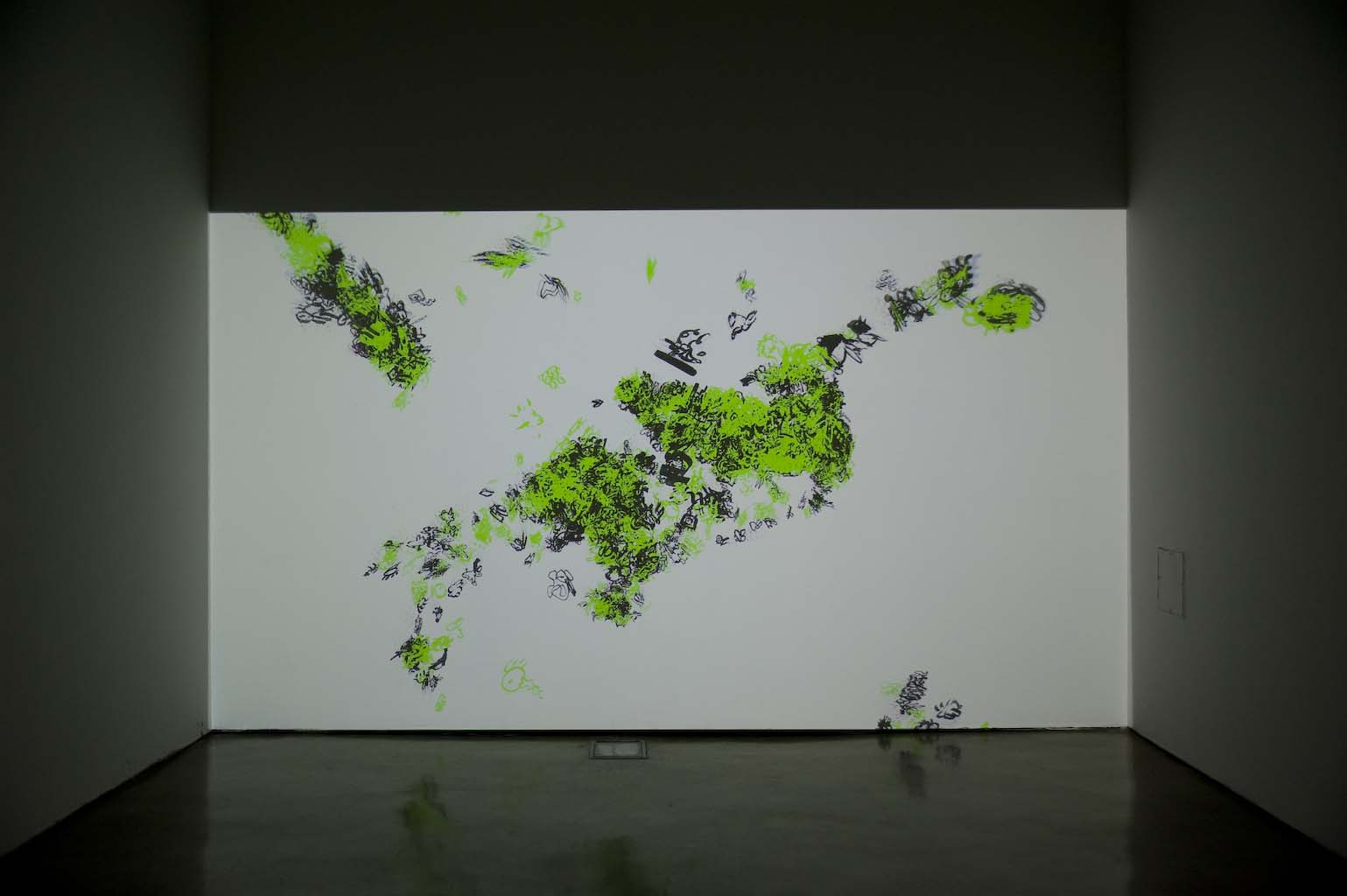
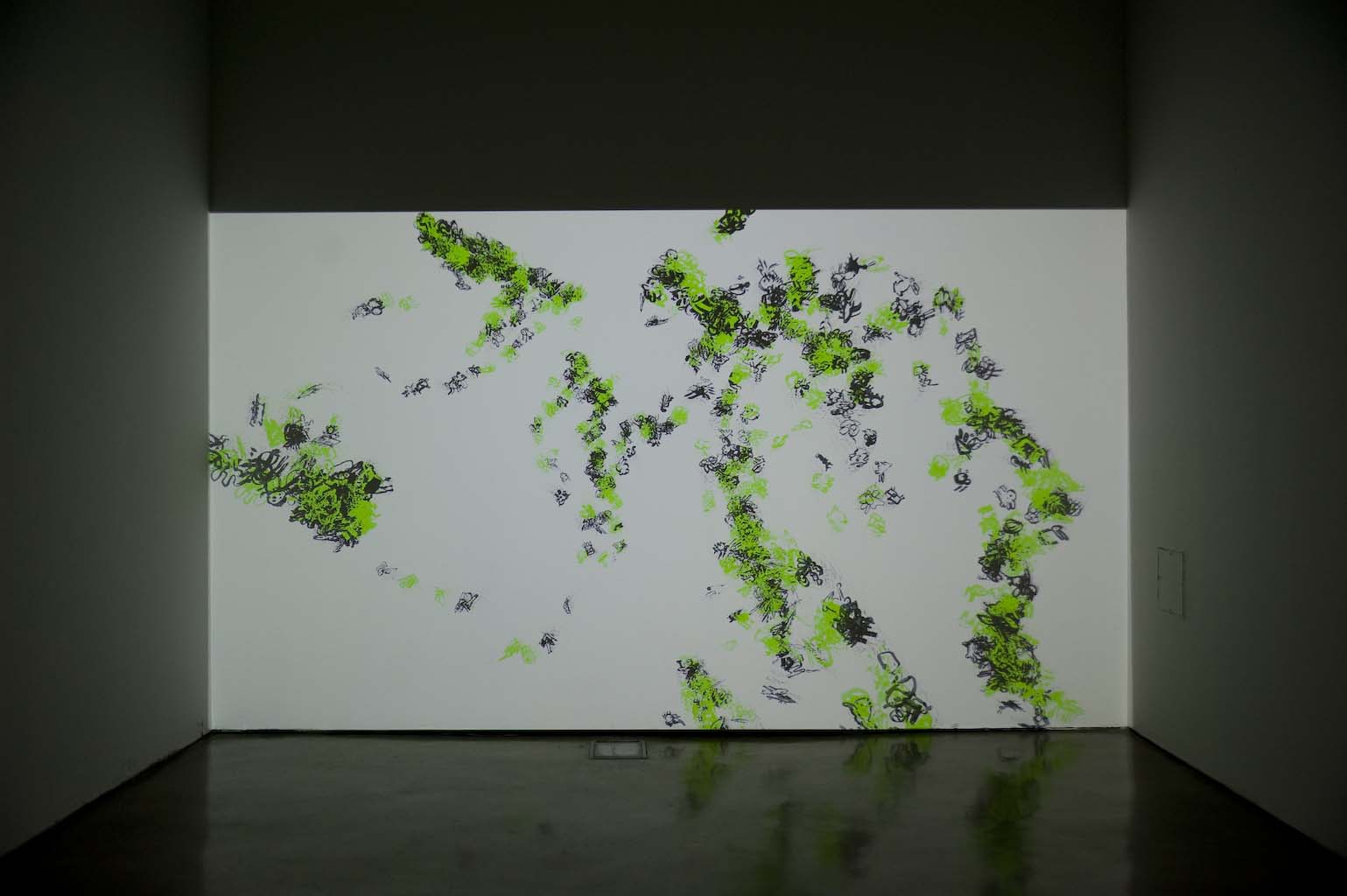
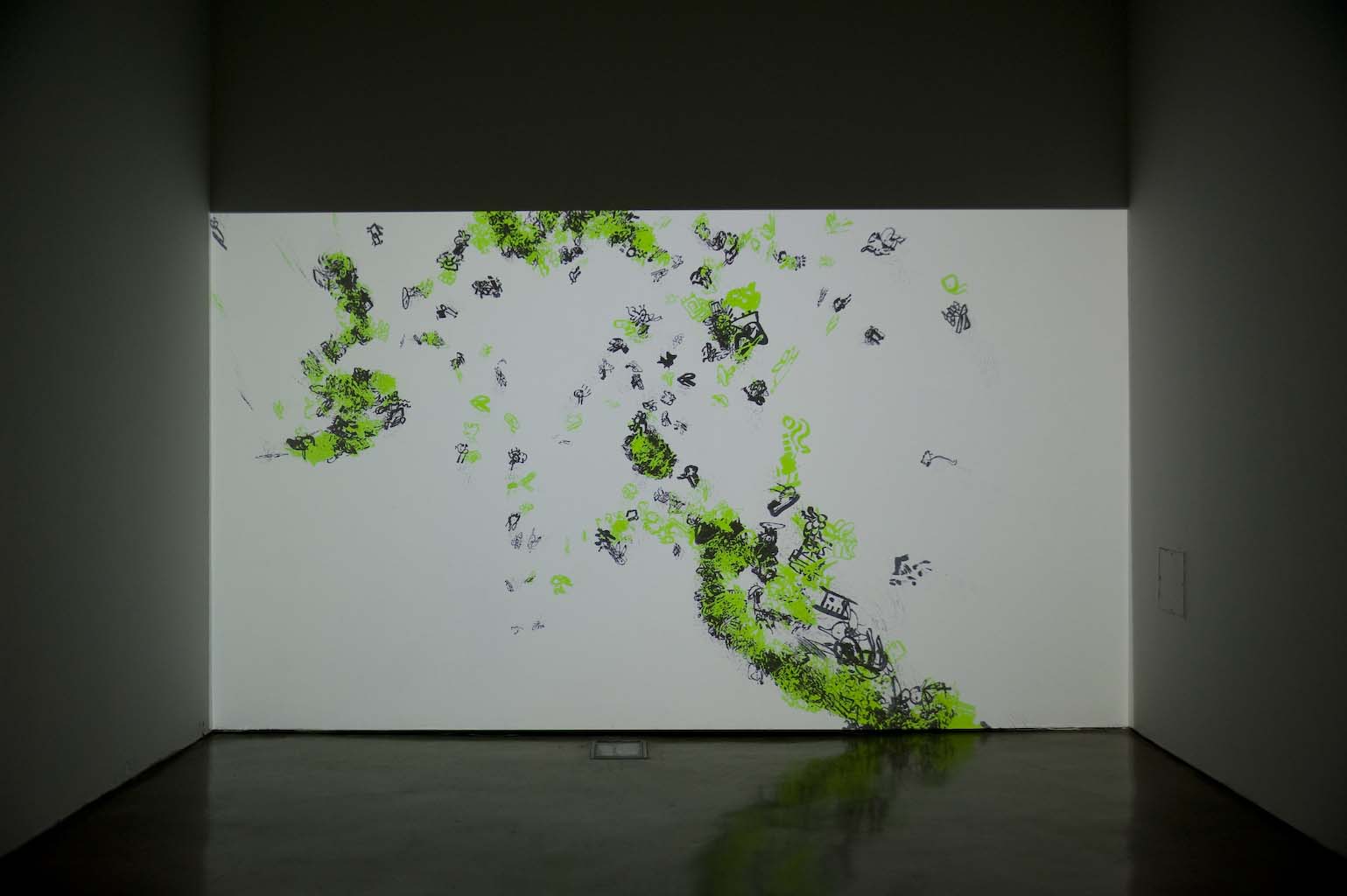
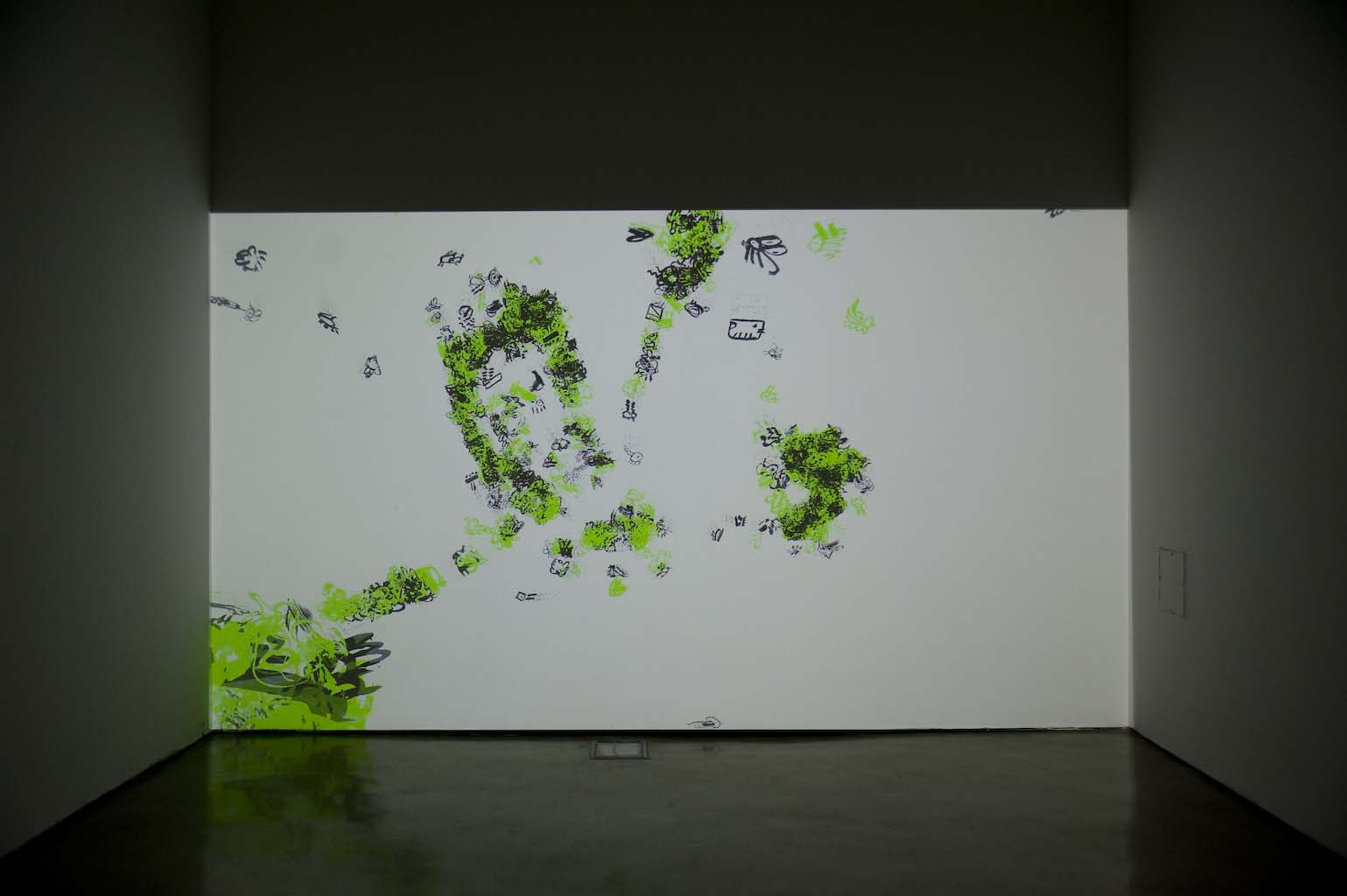
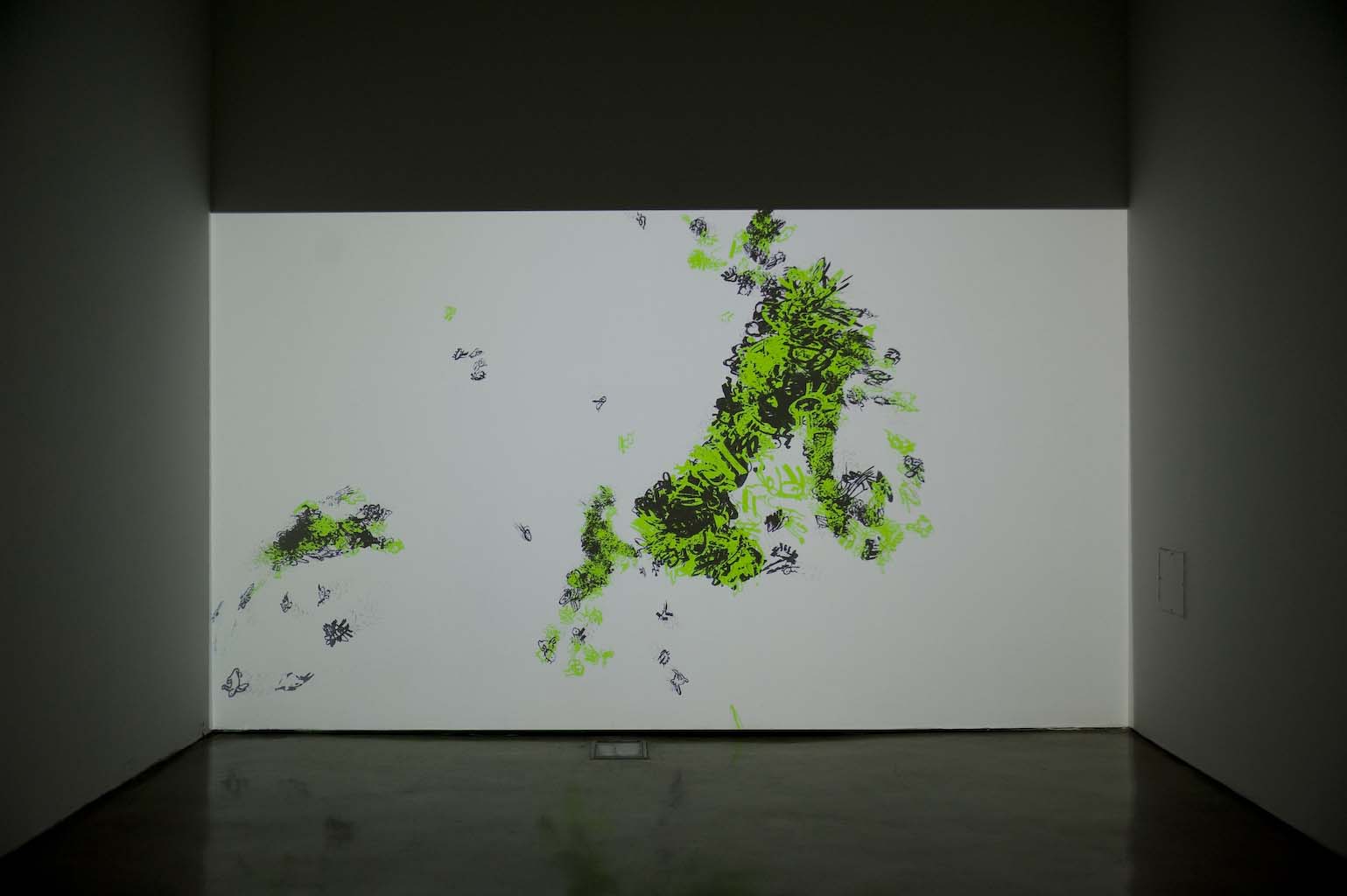
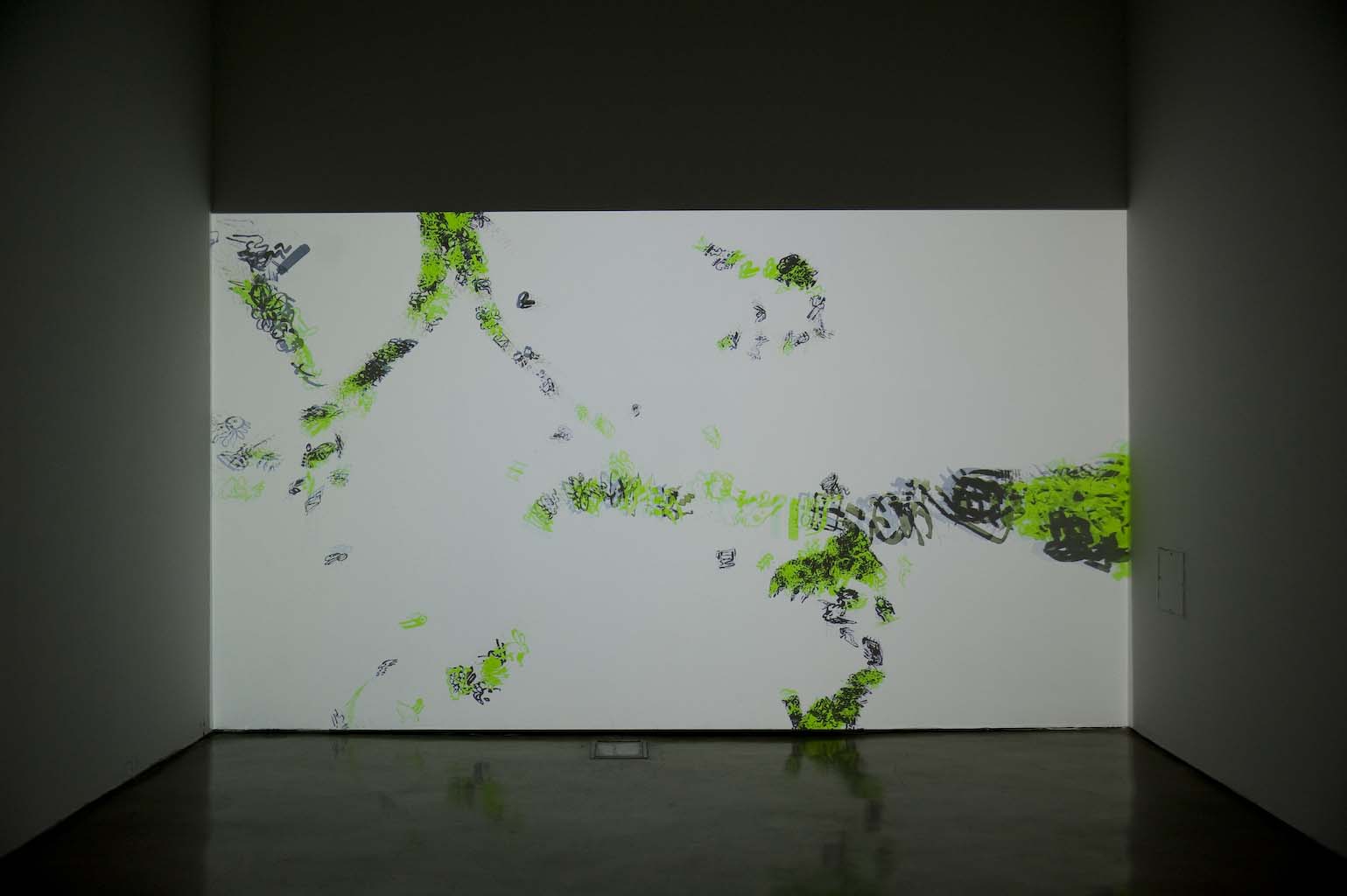
Eduardo Kac, Lagoglyphs: Animation I (2009)
Real-time parametric animation, color, silent, loopless (no fixed duration).
The real-time computer animations of the lagoglyphs, continuously flowing and reconfiguring themselves in new streams, place emphasis on the generative mutability of writing.
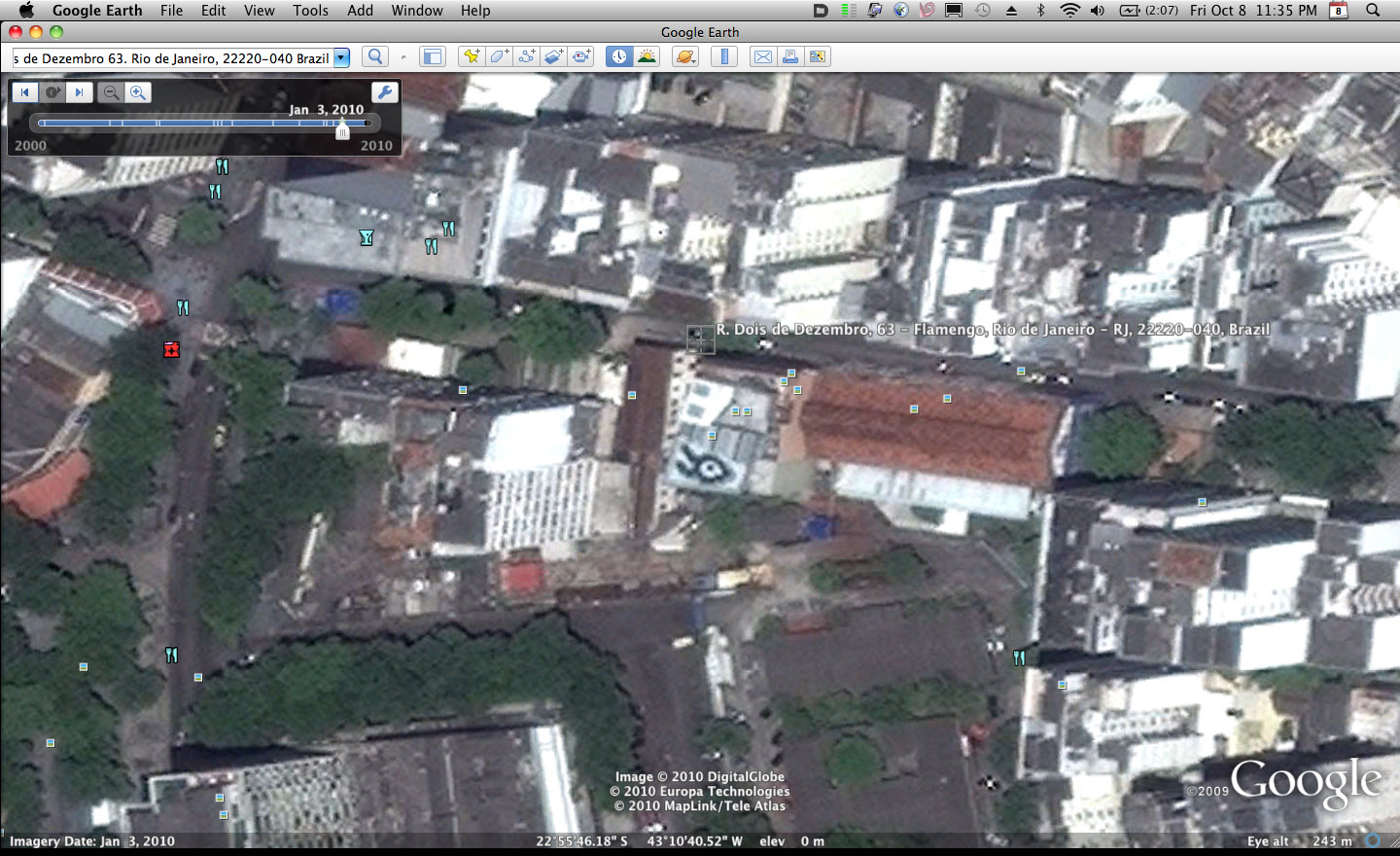
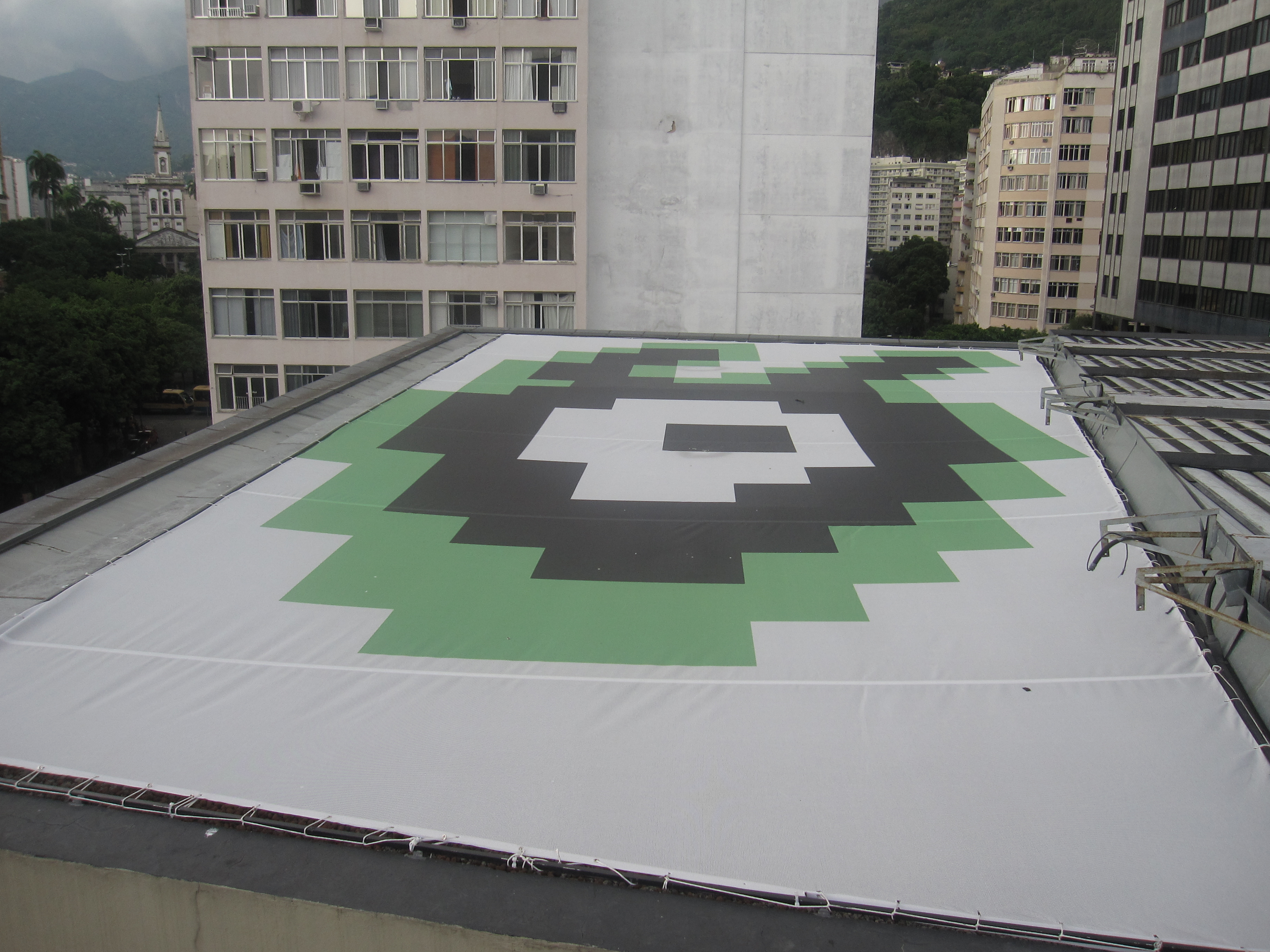
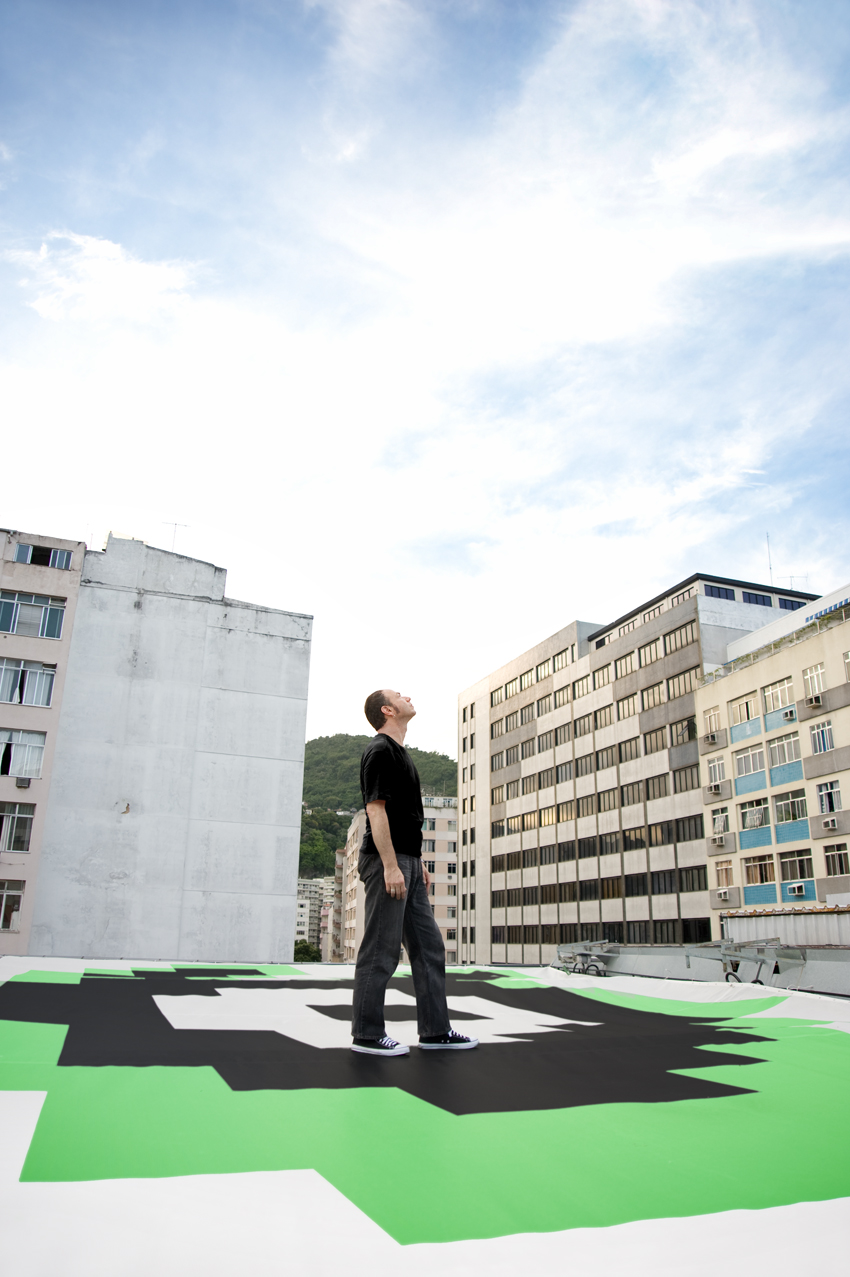
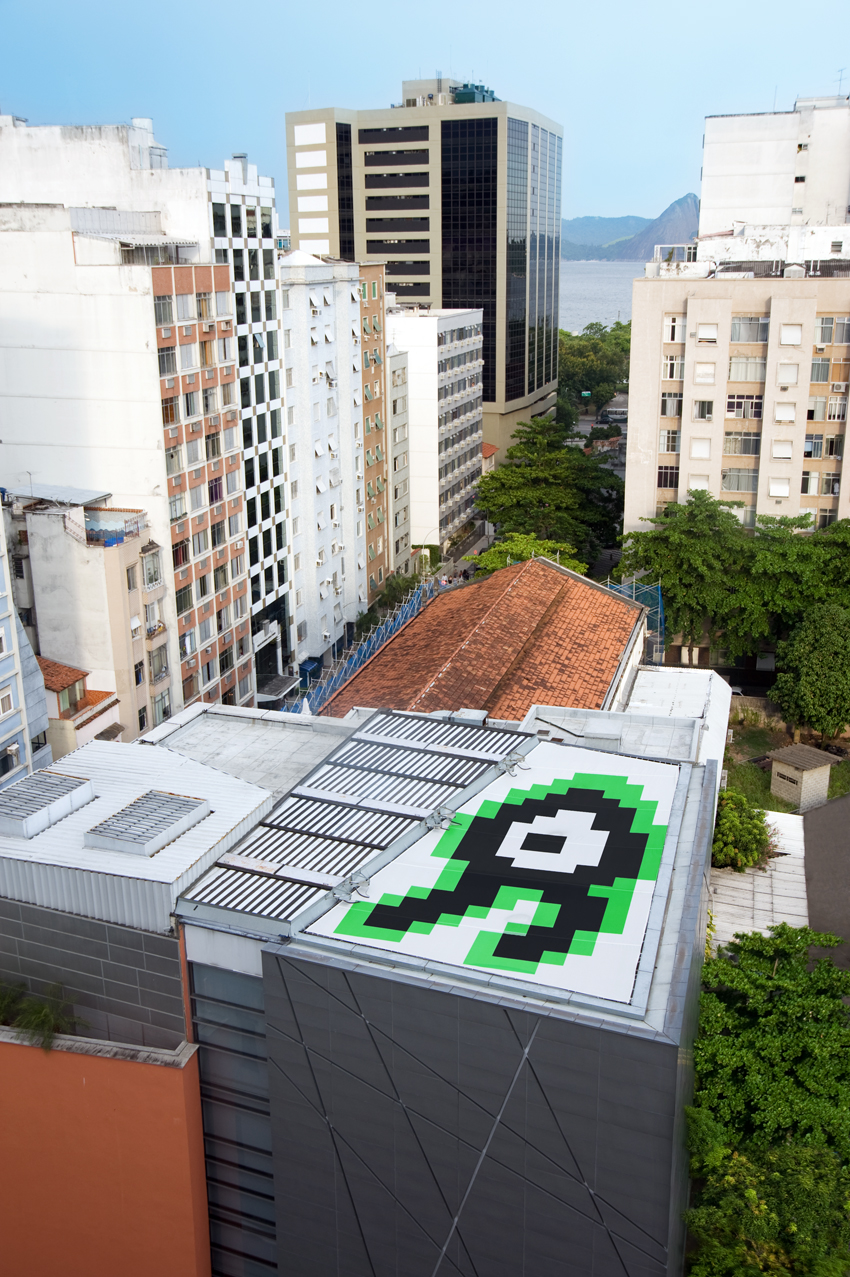
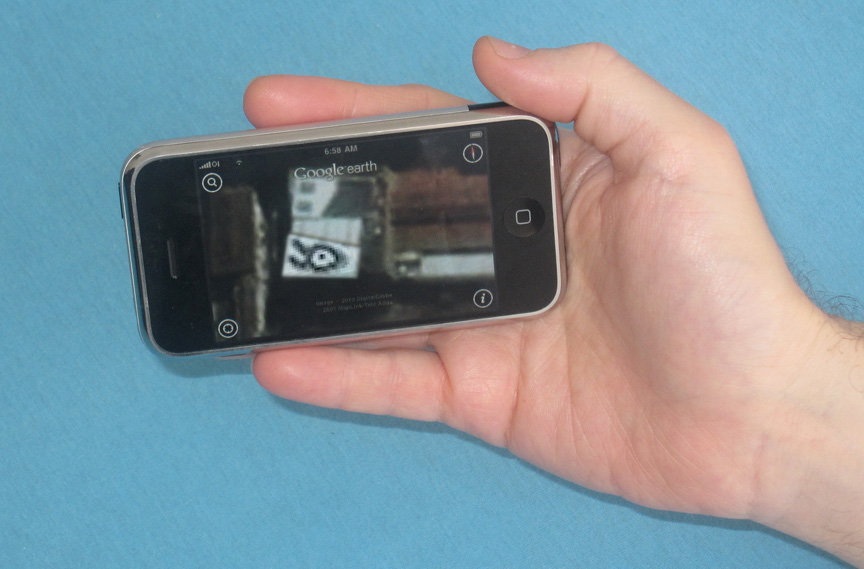
Eduardo Kac, Lagoglyphs: Lagoogleglyph I (2009)
Google Earth work composed of Lagoglyph installed on the roof of Oi Futuro, Rio de Janeiro, approx. 26 x 56 ft; and custom-ordered WorldView2 satellite photograph.
Lagoogleglyph (2009) is a distributed, global artwork that inscribes lagoglyphs into the environment and makes them visible to the world. In its first manifestation Lagoogleglyph consists of a pixelated lagoglyph, referencing a rabbit head, inscribed on the roof of the Oi Futuro building and specifically made by Kac for the eye of a satellite used by Google. The artist hired the same satellite used by Google and produced a photograph identical to the kind used by Google Earth. Lagoogleglyph is potentially visible to anyone on the planet via Google's geographic search engine.
Eduardo Kac has been a pioneer of transgenic art, a new art form based on the expression of synthetic genes in a host organism, or the expression of an existing gene in a different organism. Cypher (2009) is a fusion of a sculptural artist's book and a do-it-yourself transgenic kit containing a minilab with Petri dishes, nutrients, and synthetic DNA, which has a poem written by Kac embedded in its genetic sequence. At the center of the Natural History of the Enigma (2003/08) series is Edunia, a genetically engineered flower—a hybrid of Kac's DNA and a Petunia flower—that expresses Kac's DNA in its red veins.
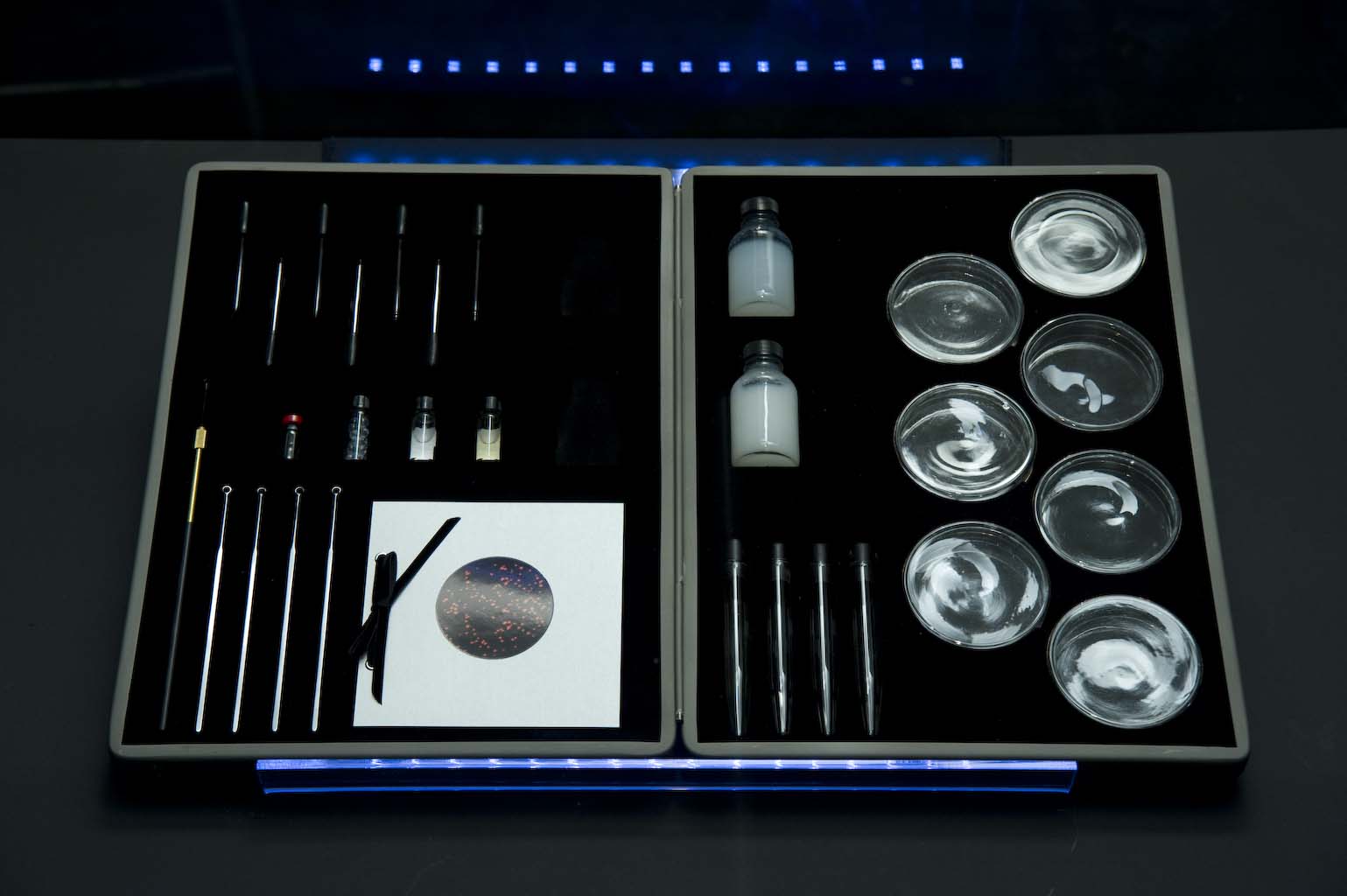
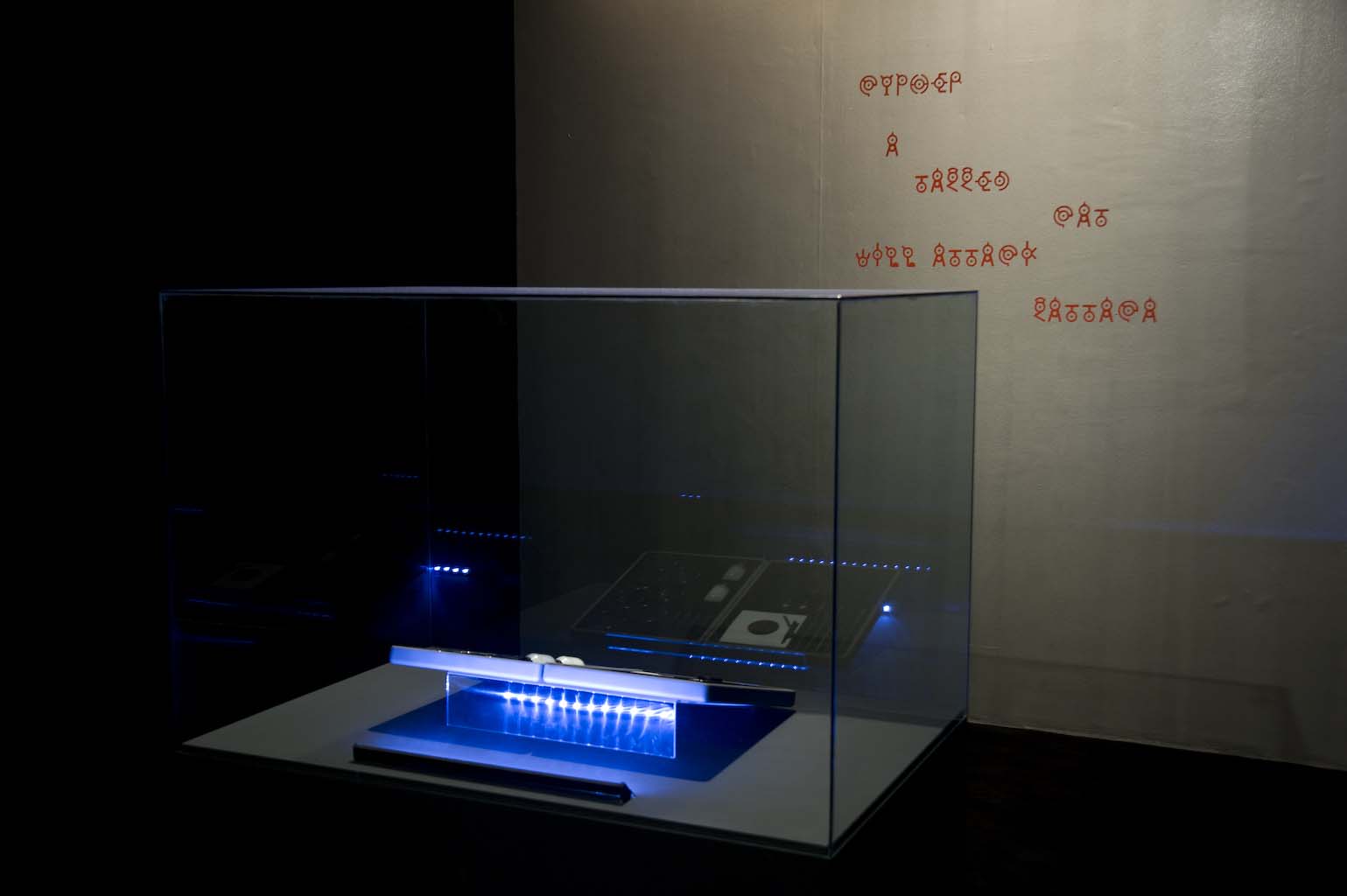

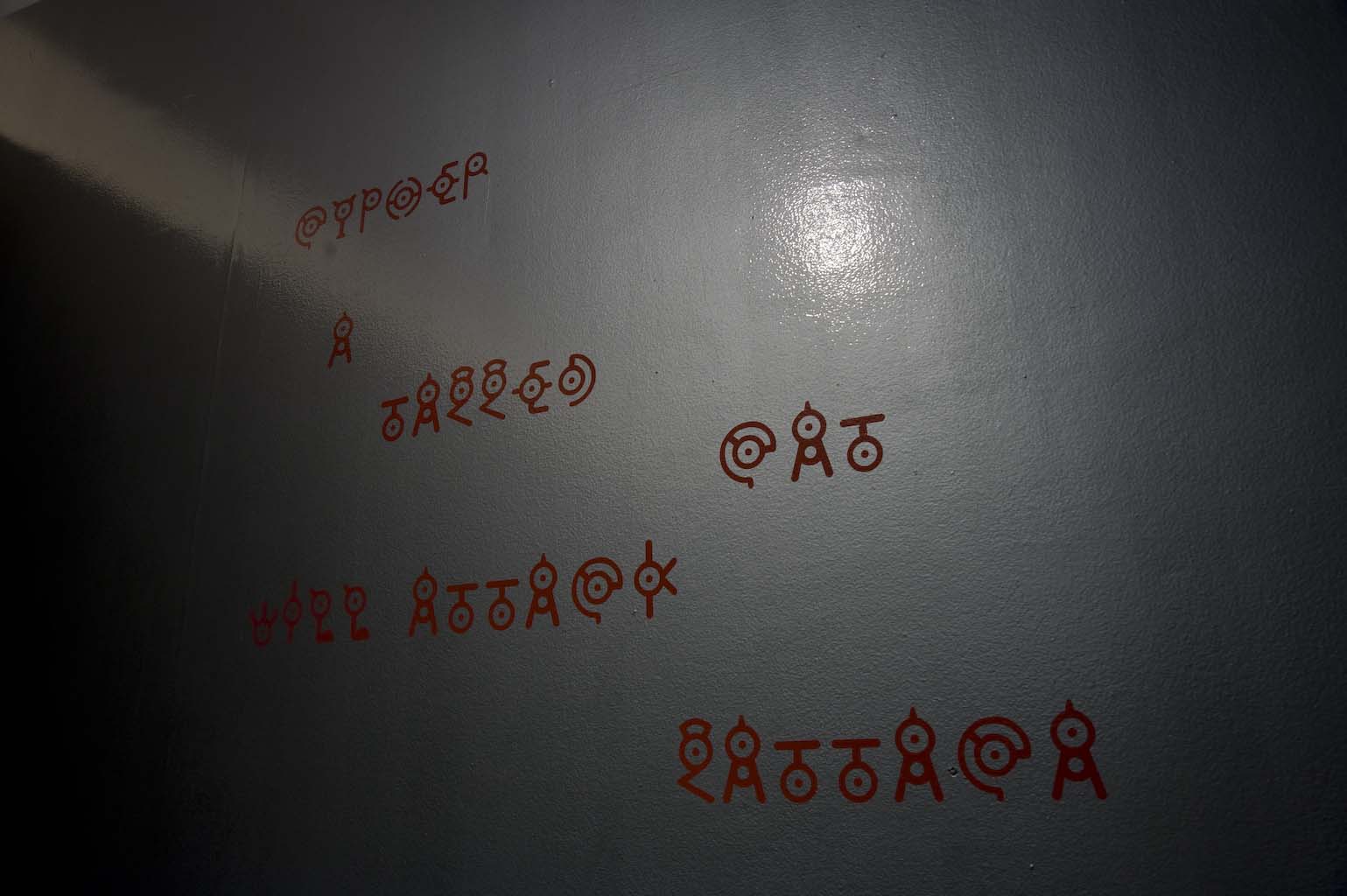
Eduardo Kac, Cypher, DIY transgenic kit with Petri dishes, agar, nutrients, streaking loops, pipettes, test tubes, synthetic DNA, booklet, 33 x 43 cm, 2009.
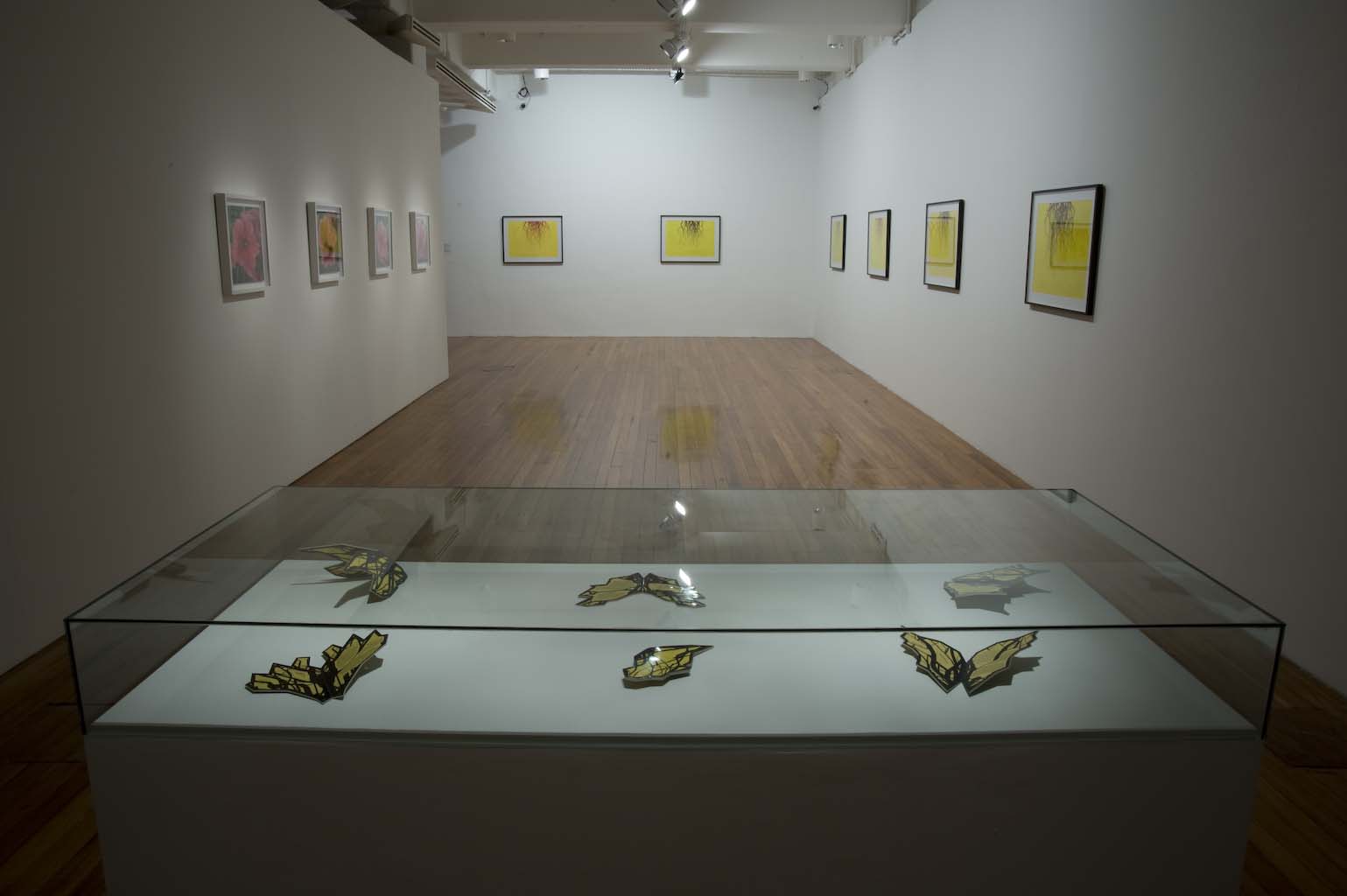
Shown above are the six photographs entitled "Plantimal" (left), the six lithographs entitled "Edunia Seed Pack Studies" (right) and the six "Edunia Seed Packs" (front, inside glass case).
Eduardo Kac, "Plantimal" I-VI, lambda prints on diasec (from the "Natural History of the Enigma" series), 16.5 x 16.5" (42 x 42 cm) each, 2009. Edition of 3.
Eduardo Kac, "Edunia Seed Pack Studies" (from the Natural History of the Enigma series), 22 x 30" (55.88 x 76.2 cm) each, lithographs, 2006. Edition of 15.
Eduardo Kac, "Edunia Seed Packs" (from the Natural History of the Enigma series), hand-made paper objects with Edunia seeds and magnets, 4 x 8 inches (10.16 x 20.32 cm) each, 2009.

Eduardo Kac, Edunia Seed Packs, hand-made paper objects with Edunia seeds and magnets, 4 x 8 inches (10.16 x 20.32 cm) each, 2009.
Specimen of Secrecy about Marvelous Discoveries is a series of works that Kac describes as "biotopes", art objects that are living organisms. The biotopes are ecologies of thousands of microorganisms framed in a transparent casing with earth, water, and other materials. Together, the individual life forms constitute an artwork that is an ecology and living system, with behaviors that express themselves in a visual slow-motion animation. Kac orchestrates the biotopes' metabolism through combining them with nutrient-rich media and controlling the energy they receive in order to keep them alive. Colors and geometric visual forms are responses to the external environment, such as temperature and light, and the internal metabolism of the biotope.
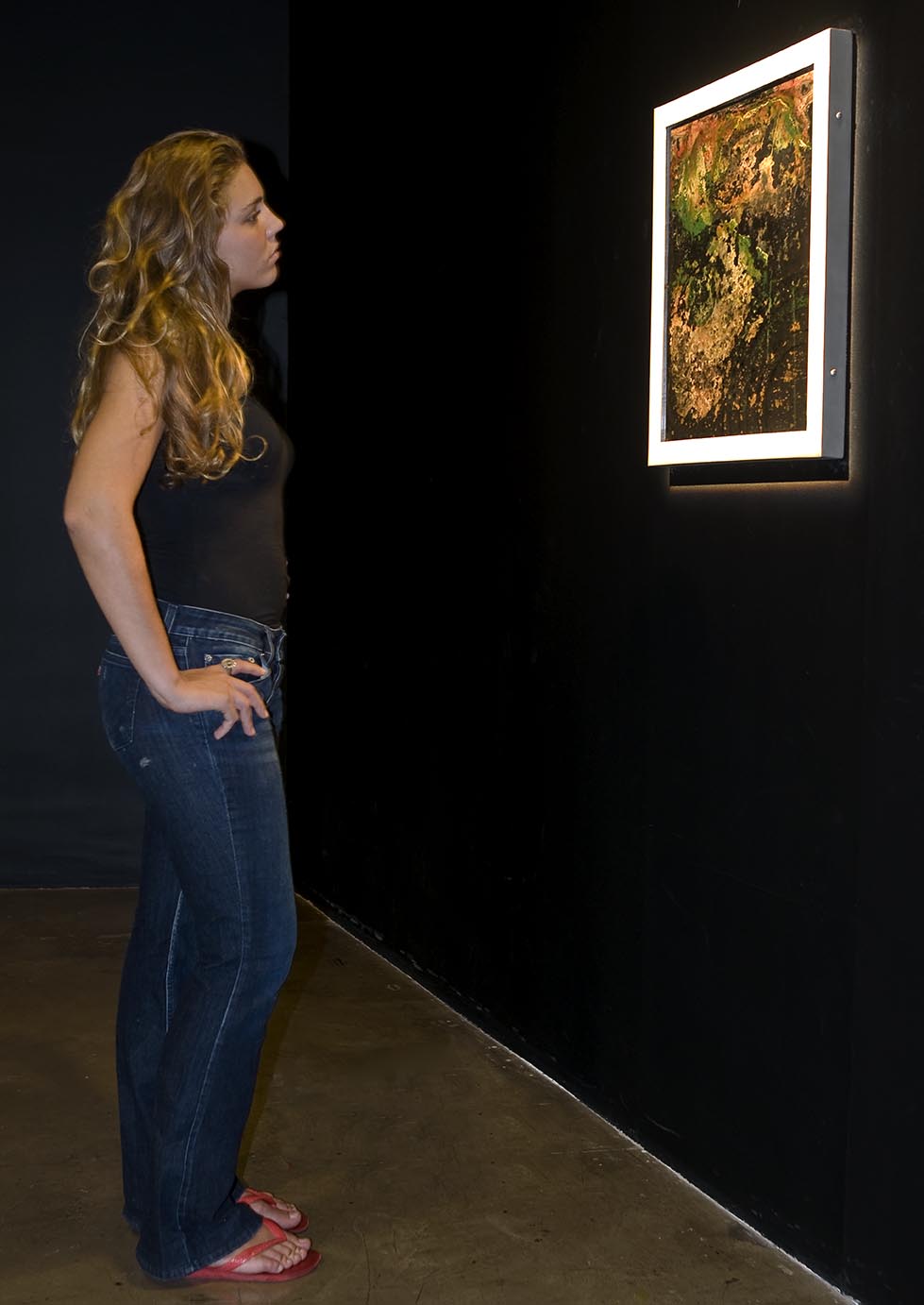
Photo: Jaime Acioli
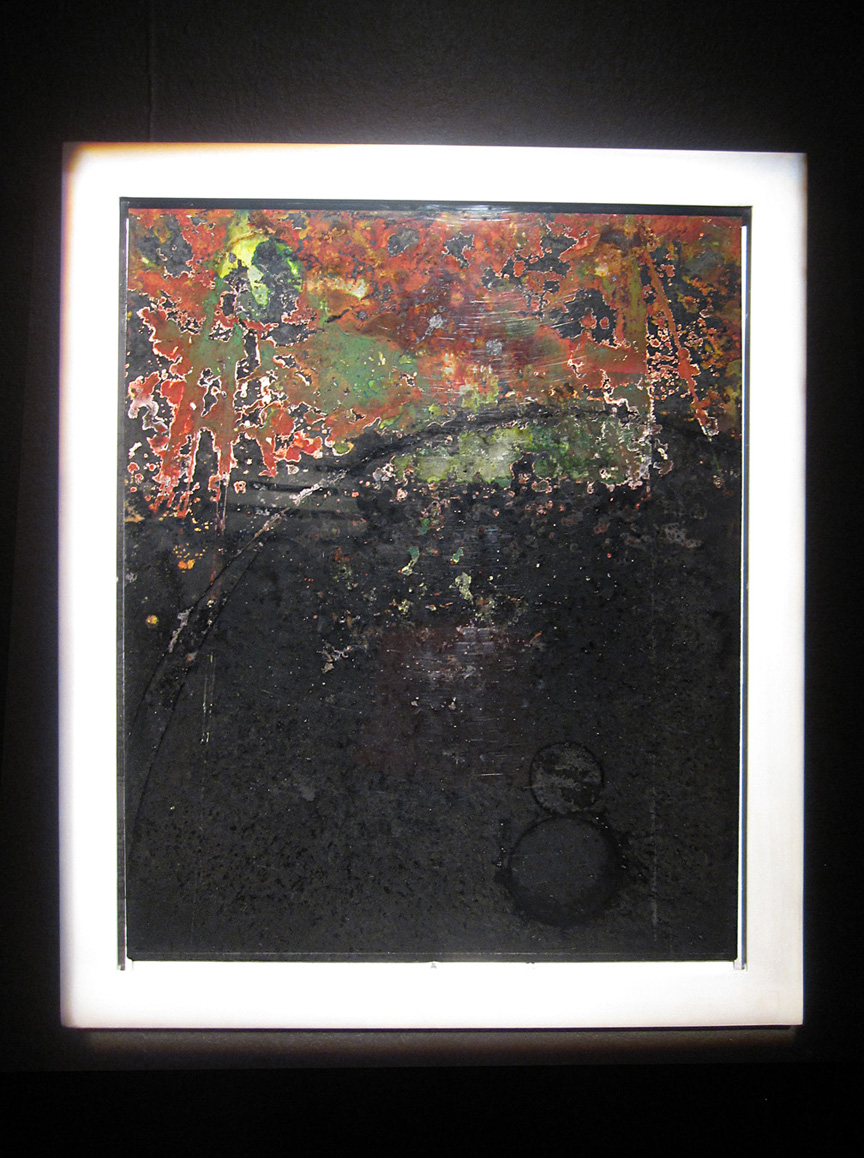
Odissey (2006)
Biotope, 19 X 23 inches, 2006.
Private collection, Rio de Janeiro.
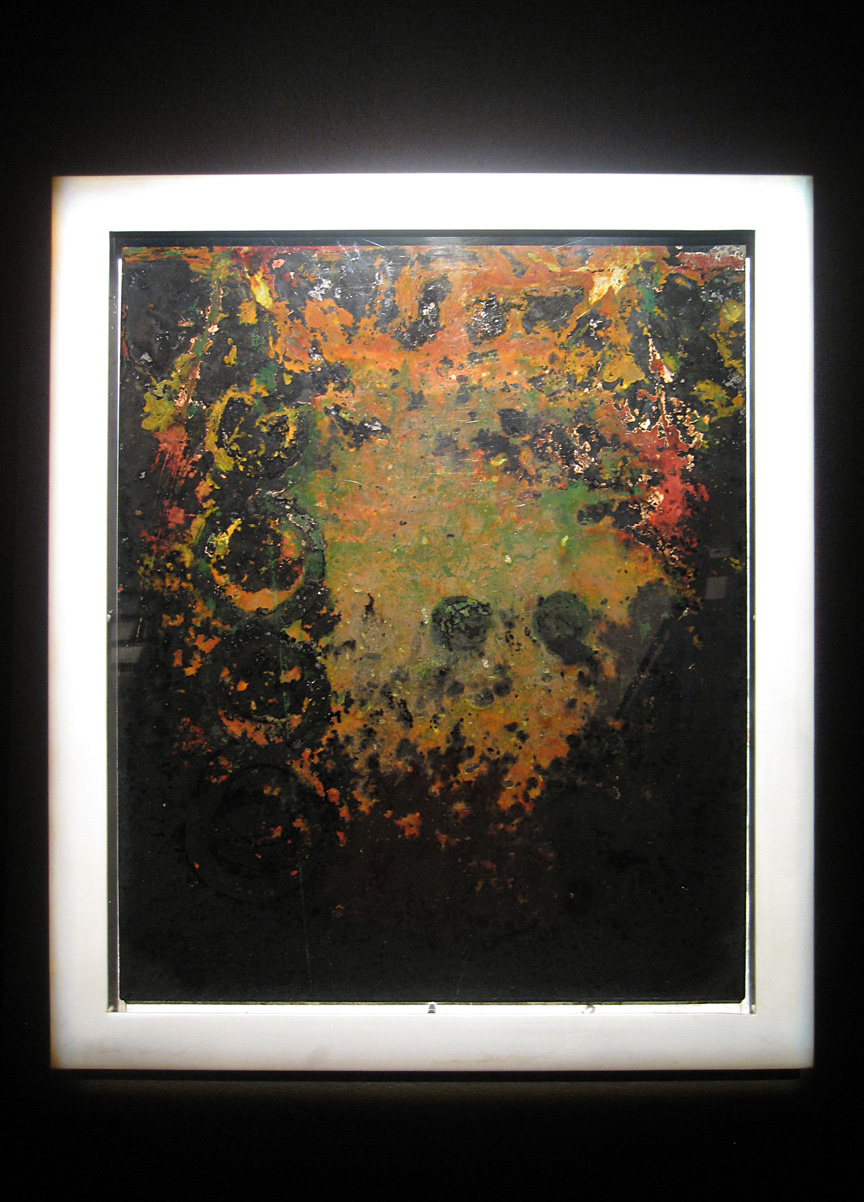
Theorem (2006)
Biotope, 19 X 23 inches.
Private collection, Rio de Janeiro.
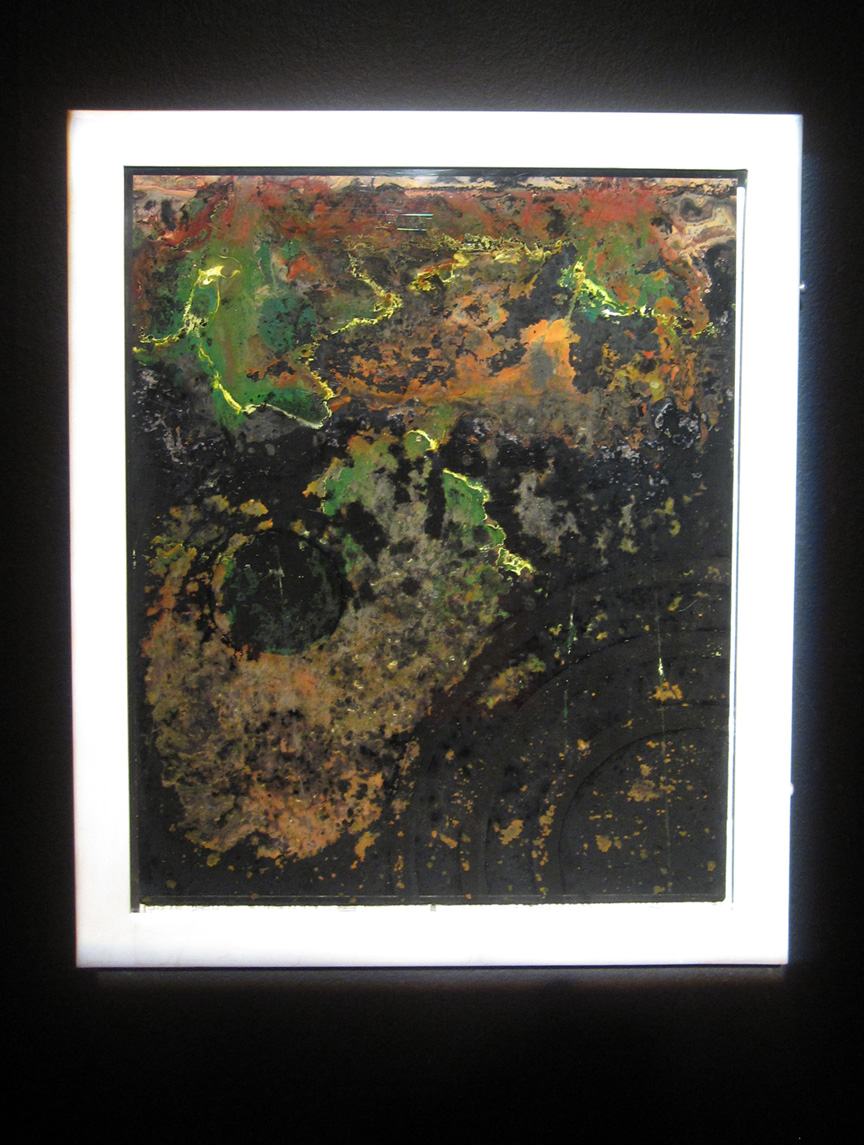
Oblivion (2006)
Biotope, 19 X 23 inches.
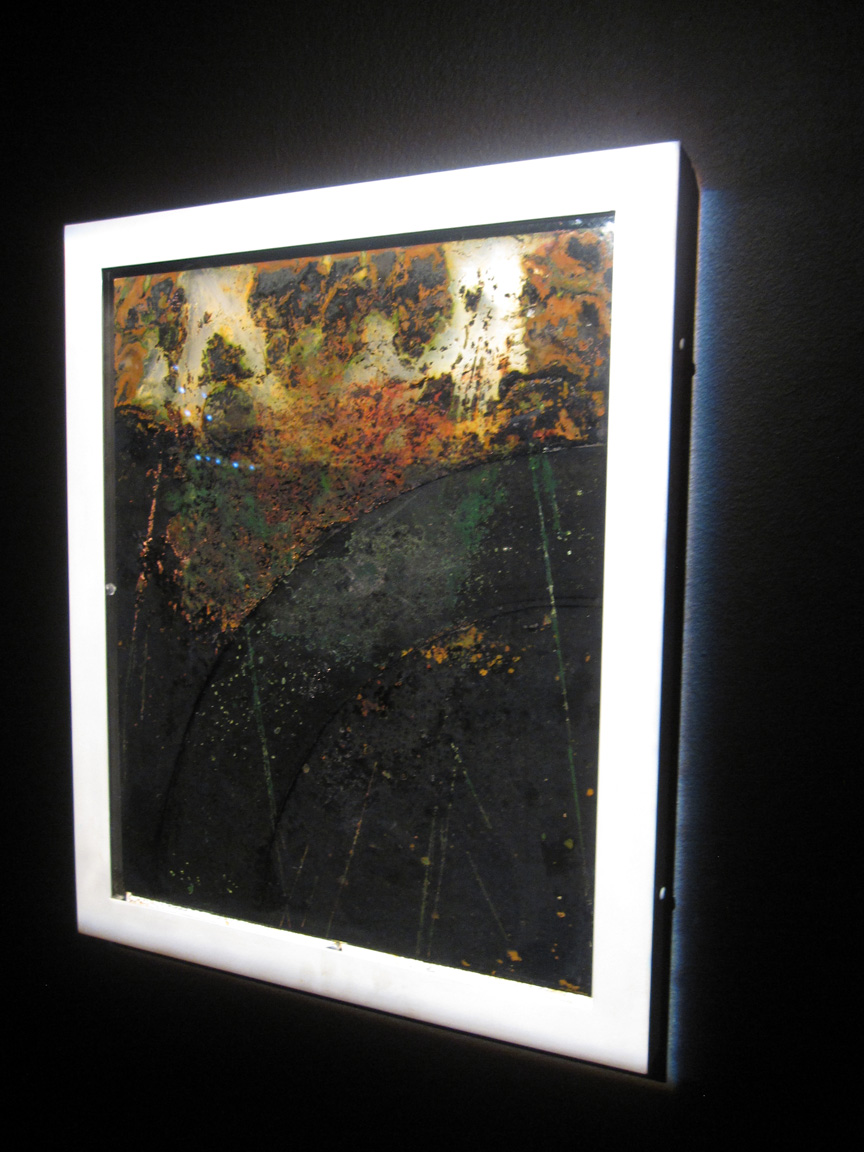
Hullabaloo (2006)
Biotope, 19 X 23 inches.
Collection Alfredo Herzog da Silva, São Paulo.
